What is amber? Amber is a fossilized tree resin. The trees responsible for production of amber existed on Earth 25 - 323 million years ago and are already extinct. That is why, by its nature, amber is not a stone or mineral. Amber is a biolith, one of two non-mineral gemstones found on Earth, the second one being pearls
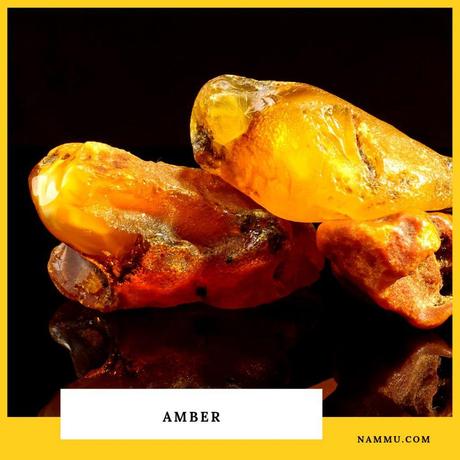 https://nammu.com/en/amber.html
https://nammu.com/en/amber.html In this post you will find
Amber Formation and Composition
How Is Amber Formed?
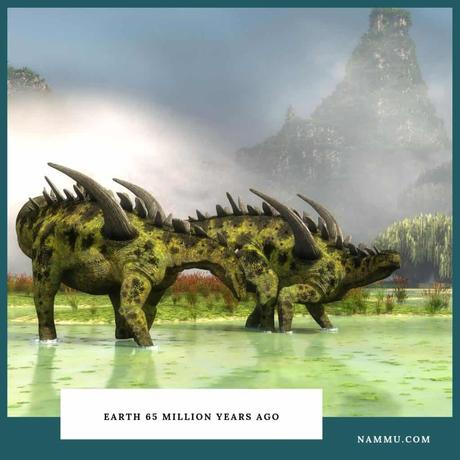
To figure out how is amber made, we will need to travel back for 65 million years to the world of huge dinosaurs, deep seas and dense forests. So fasten your seat-belts and enjoy the ride. 🙂
Imagine the life on Earth 65 million years ago. The land where your home is standing right now was probably covered by a deep-deep blue sea or a wide, dense and dark forests similar to the ones that for sure covered the territory of present central and northern Europe. That is where we are going to travel - to the land of biggest amber deposits in the world - Europe.
Well, it is obvious that the Earth by that time was not an easy place to live. Huge creatures - dinosaurs were the planet's main inhabitants and the purpose of every living thing on Earth was a survival.
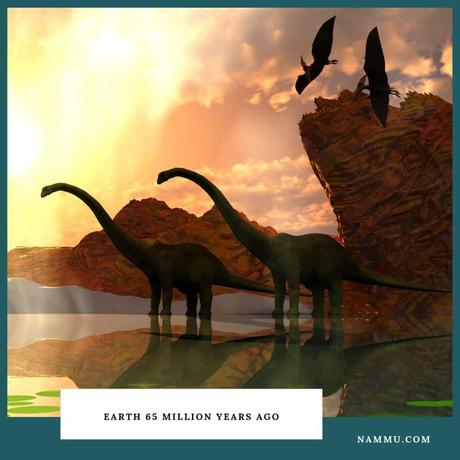 https://nammu.com/en/amber.html
https://nammu.com/en/amber.html There also happened awful, disastrous days, when huge storms, hurricanes and winds came to disturb the life on lands.
Dinosaurs and other extinct creations were battling for territories and hunting each other for survival every day. Incredibly huge insects were crowding around, destroying and chewing everything that can be more or less on their menu.
From day to day, prehistoric trees were suffering the damage caused by its surrounding. For centuries, trees were perishing and growing up, experiencing more and more problems every day.
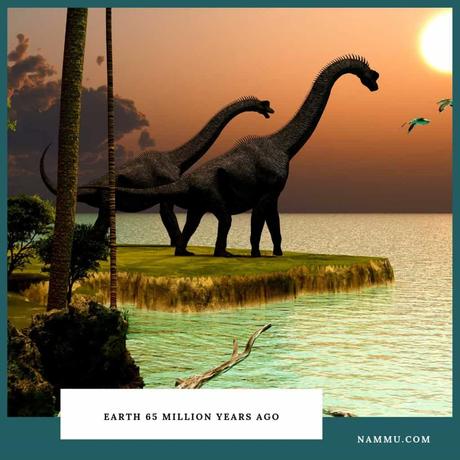
That amazing material now is called a resin and the trees in your garden use it in the same way, their ancestors did millions of years ago. This is probably a secret of a long life of all resin-bearing trees growing now on Earth.
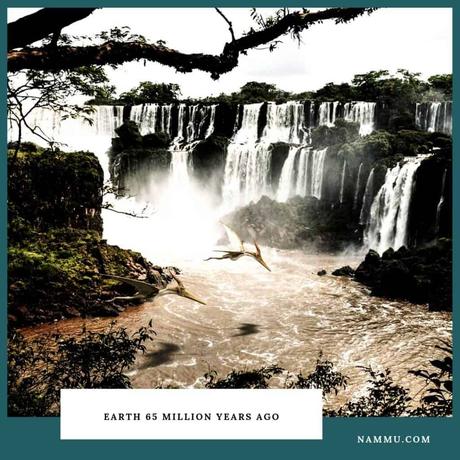
Unfortunately, this didn't make those trees resistant to terrible hurricanes. They fell, broken by the wind. And their broken resin-coated logs and resin-created stalactites, blobs, entrapped creatures were streamed down the rivers and tides to the deltas in coastal regions. Where they were buried for thousands of years in sedimentary deposits allowing them to undergo the process of amberisation.
Amberisation Process
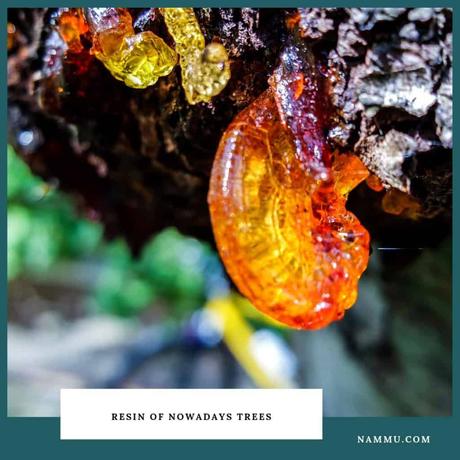
We have already explained you a first part of the process of amber formation, but what happens next? How is amber made, real amber? How long does it take for amber to form? What needs to happen for tree resin to fossilize and transform into full-on amber?
As we know, initially, resins protect injured plants from further damage, oozing out and hardening to form a defense against invading fungi and insects.
Later, during maturation process, which takes place over millions of years, polymerization, isomerization, cross-linking and cyclisation occurred, forming a mixture of substances with the general formula C10H16O, i.e. forming an amber.
This continuous process of transformation of freshly hardened resins to those that are rocky is called amberisation. Transformation of resin into amber depends on the prevailing geologic conditions as well as composition of the resin. It is usually a result of geothermal stress as chemical changes in the resin accelerate at higher temperatures. And this is how amber fossils are formed.
Is Amber a Gem or Is Amber a Mineral?
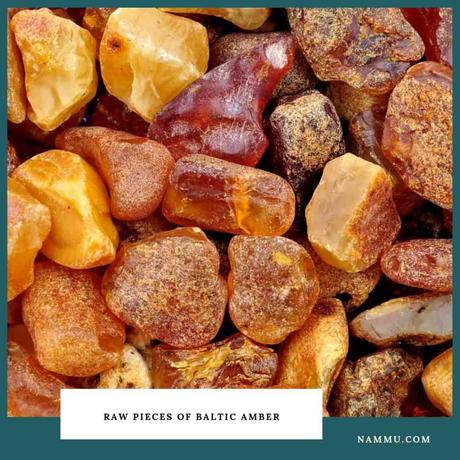
So, is amber a gem or is amber a mineral? The answer is no and no. Scientists have concluded that amber gemstone is not, in fact, a stone or mineral, but rather a fossilized resin of prehistoric trees.
Botanical Origin: Fossil Resin and Amber Tree
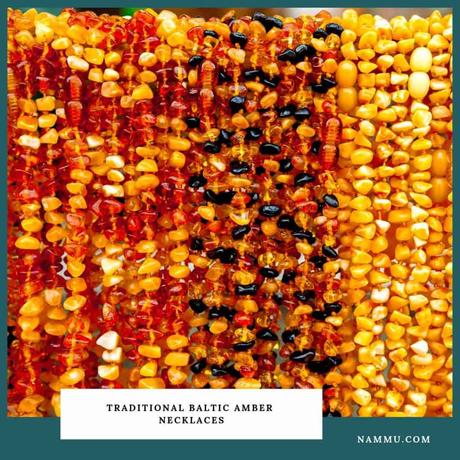
Fossil resin according to Merriam-Webster dictionary is "any of various hard natural resins (as amber or some copals) usually found in the earth as exudates of trees long dead."
Amber plant is an extinct amber tree. And hard scientific evidence suggest the same: Amber is a fossilized tree resin.
With the development of technologies, organic origins of amber are not questioned anymore. However, despite a remarkable legacy of archaeological, geochemical and palaeobiological investigation, continuous debates are stressing the scientific community to define the exact "prehistoric relative" of the nowadays trees which was responsible for the production of resin that transformed into amber.
As there are no more trees producing resin that fossilizes into amber, botanical affinities have been suggested based on examination of the entombed debris and through chemical studies of the resin.
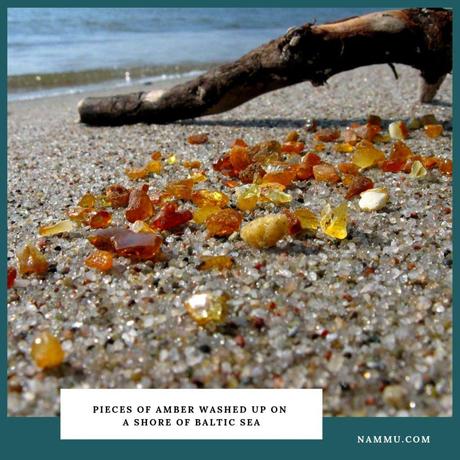
Baltic amber constitutes the largest known deposit of fossil plant resin and the richest repository of fossil insects of any age, so mostly debates took place around origins of Baltic amber.
Here are the suggestions of scientists regarding tree families which have the most chances to be related to the prehistoric amber trees:
- Fossil resins from Baltic region -Pinites succinifer, Araucariaceae, Cupressaceae, Taxodiaceae and Sciadopityaceae, but neither group fully satisfies the range of geochemical and phytogeographical criteria necessary for a conclusive linkage, resulting in a botanical conundrum that has endured for well over a century.
- Fossil resins from the Americas and Africa are closely related to the modern genus Hymenaea, while fossil remains in Asia originate from the trees-predecessors of Araucariaceae tree family.
Amber Resin or Amber Sap: What is amber made of?
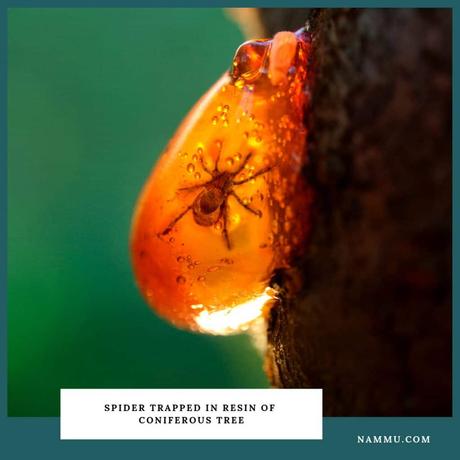
As you know, amber is heterogeneous in its composition, meaning composed of the same substance in different phases, as liquid water and later solid ice. But, here we should explain that a usual tree sap ("tree juice", "tree blood" that functions to transport vital mineral nutrients and sugars to all living parts of the tree) is not what amber was made of .
Sap is the fluid that circulates through a plant's vascular system, while resin is the semi-solid amorphous organic substance secreted in pockets and canals through epithelial cells of the plant.
Although there are contrasting views as to why resin is produced, it is a plant's protection mechanism. The resin may be produced to protect the tree from disease and injury inflicted by insects and fungi. Resin may be exuded to heal a wound such as a broken branch, and resins possess odors or tastes that both attract and repel insects. In mature trees, resin may simply exude from vertical fissures in the bark due to tension produced by rapid growth. Resin may also be produced as a plant's method for disposing of excess acetate.
, the one that you can buy on our website, took millions of years and hundreds of climate changes to be formed and is very well made from a substance called a resin, but not a tree sap.
Today's trees also produce resin that looks like this:
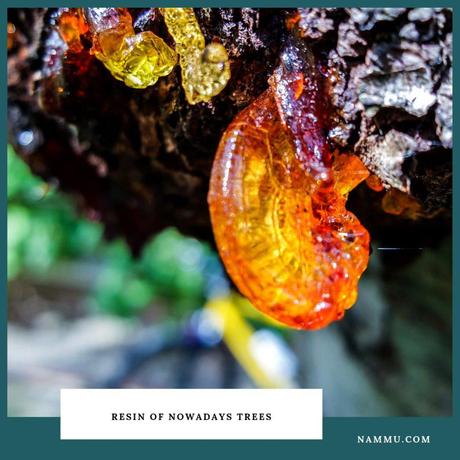
But, let us remind you, there are no more trees on Earth that produce the same resin that was hardened in amber. Those exact trees existed on Earth 25 - 323 million years ago and are already extinct.
Amber Chemical Formula
C10H16O. This is what amber chemical formula looks like. Chemists will know what it means, but for the rest of us, regular folks, here is a small explanation.
Amber chemical formula demonstrates that its basic ingredients are carbon (approximately 78%), oxygen (11%), hydrogen (10%). A small amount of sulfur (up to 1%) may also be included.
Amber Properties
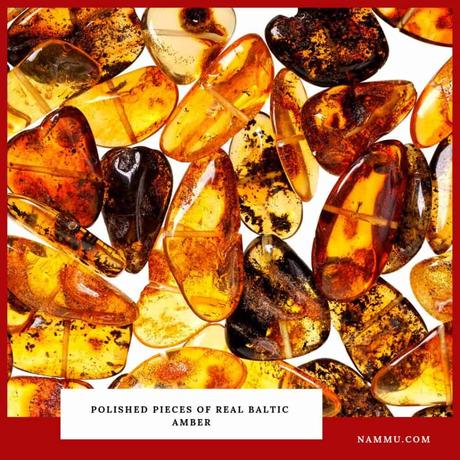
Amber Hardness
According to Mohs' scale amber hardness ranges from 2 to 3. It means that amber is relatively soft stone: it can be scratched with a knife. So, you should be very careful wearing amber. Due to this quality it both can be easily broken if hit or if it falls down.

Nevertheless, low amber hardness is a very valuable quality. Thanks to it, the stone can be easily treated - cut, drilled, ground and polished.
The density of amber is 1.050-1.096 g/ml, which is only slightly higher than that of water (about 0.998 g/ml at room temperature). That is why amber easily floats in salty water.
Combustion
Amber burns. Yeah, you heard me right.
Due to its chemical composition, i.e. high levels of carbon ingredients, when heated, amber first gets soft. And then melts and burns at the temperature of 315 - 350 Cº. So, it is no wonder that amber is called Bernstein (Börnsteen) in German, meaning "burning stone".

When burns, due to high levels of carbon, amber as a burning organic substance will lead to a sooty flame.
In thirteenth century, in colder German regions, in some parts of Lithuania, Latvia and even Spain, villagers who were not aware about the price of amber, were burning it to heat their homes.
Amber Smell
When amber burns, it emits a very peculiar smell. Some refer to is as amber smell. So, what does amber smell like?
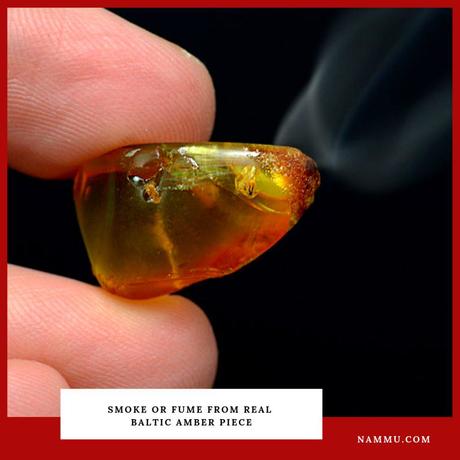
Mineral amber has no smell unless it's heated (by burning, or working with power tools) and amber smell is supposedly an unpleasant resinous smell. But what is an unpleasant smell to one, is a masterpiece to another.
When real amber burns, room is filled with a very delicate smell of pine. Amber smell is a warm, resinous scent that can produce a faint prickle at the back of the nose. Its rich and earthy.
In ancient China, it was customary to burn amber during large festivities.

According to some sources on the internet, it's possible to extract an oil from the resin, but the smell is similar to when it burns.
Although when burned, amber does give off a characteristic "pinewood" fragrance, modern products, such as perfume, do not normally use actual amber due to the fact that fossilized amber produces very little scent. Some people even claim that real amber isn't used in perfumery at all.
Nevertheless, in perfumery, scents referred to as "amber" are often created and patented to emulate the opulent golden warmth of the fossil. That is why, in perfumery amber smell can vary greatly as generally amber is produced synthetically.
Just a variety of fragrances in perfume shops claiming to have "amber notes" is a testament to the diversity of amber interpretations in a fragrance.
Electrostatisity
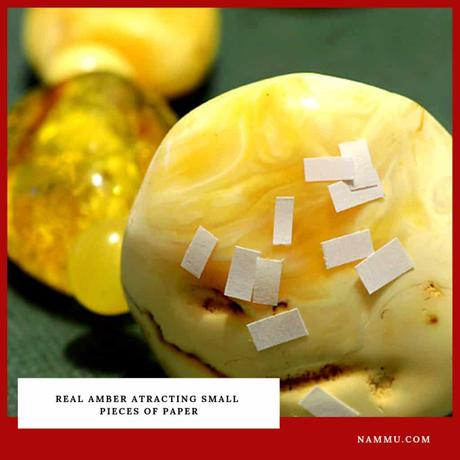
Amber was the first substance on which electrostatic phenomena were observed by the Greek philosopher Thales of Miletus, 600 BC. Greek people called amber -"electron" and later it gave a life to the word "electricity".
In 1601, the English physicist William Gilbert, the first to distinguish between magnetic and electrical attraction, coined the term " electricus" for the property of attracting small objects after being rubbed, derived from amber's Greek name elektron (meaning "shiny" or "the sun").
Amber History
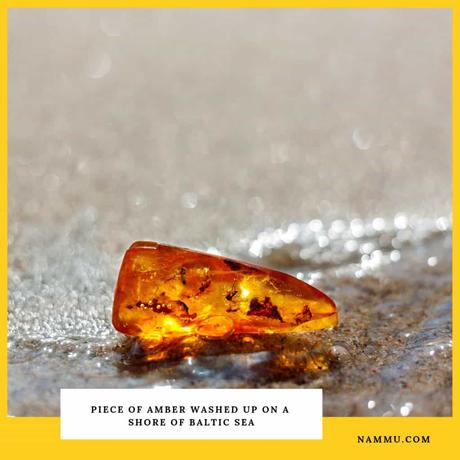
Amber, the fossilised resin of trees, was used throughout the ancient world for jewellery and decorative objects. The main source was the Baltic region where amber, known to mineralogists as succinite, was washed up onto beaches and easily collected. Besides its aesthetic qualities and ease of carving and polishing, amber, for many ancient peoples, had mysterious qualities such as protecting the wearer, warding off evil, and curing diseases.
Since the Paleolithic era (2.6 million years ago), amber played an important role in human life and death. The first known documented appearance of amber dates back to the times of the early second-millennium BC, what is 2000 years Before Christ, in Mesopotamia.
However, the most extensive surviving ancient source that will help us to know how ancients answered questions about amber is the Pliny's the Elder chapters on amber in his encyclopedic Natural History: CHAPTER 11 - AMBER: THE MANY FALSEHOODS THAT HAVE BEEN TOLD ABOUT IT and CHAPTER 12 - THE SEVERAL KINDS OF AMBER: THE REMEDIES DERIVED FROM IT.
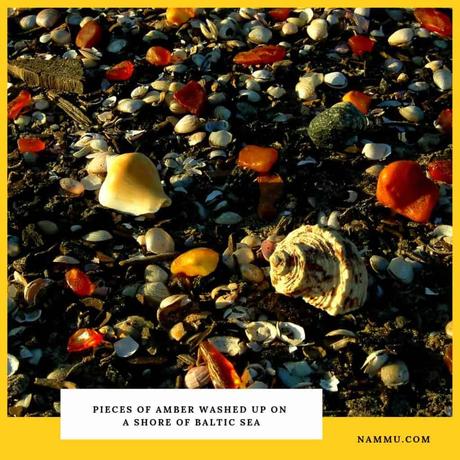
Compiling his work at a time when amber was beginning to flood into Rome, he provides a survey of the stories then in circulation about the formation of amber, its geographical and mythical origins, and the way it was classified and used. The depth and complexity of the information available to Pliny is striking. Evidently there was a varied and lively debate about what amber was and where it came from by the time he was writing, right down to the question of whether it was a vegetable, mineral, or faunal product.
Throughout Book 37, Pliny comments critically on his source material, contrasting its validity with current evidence.
Next in rank among the objects of luxury, we have amber; an article which, for the present, however, is in request among women only.
[...]
This is a subject which affords us an excellent opportunity of exposing some of the frivolities and falsehoods of the Greeks; and I beg that my readers will only have patience with me while I do so, it being really worth while, for our own practical improvement, to become acquainted with the marvellous stories which they have promulgated respecting amber.
- Pliny the Elder, The Natural History, Chapter 11 - AMBER: THE MANY FALSEHOODS THAT HAVE BEEN TOLD ABOUT IT.
Amber in Europe
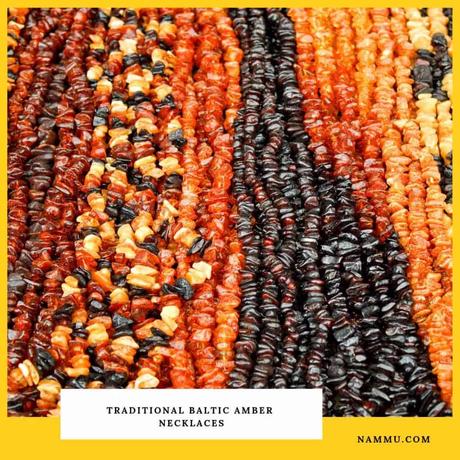
The earliest amber workshops in the Baltic region date to the Neolithic period (12,000 - 1,700 years ago). Trade contacts between Bronze Age and also later cultures ensured that amber traveled around Europe, thanks mainly to the Germanic and central European tribes who wanted to exchange it for metals they could use themselves or to trade on to tribes in Britain and Scandinavia. Seafaring traders such as the Phoenicians, Greeks, and Carthaginians helped spread amber even further afield.
Amber moved down from the Baltic via rivers from west Jutland (nowadays Denmark) across Germany and down the Po Valley of northern Italy to the Adriatic sea. From there it was carried by sea traders to the Levant (common name for the countries of the eastern Mediterranean - Syria, Lebanon, Israel, Jordan, Egypt, Turkey, etc.) and Near East.
Amber beads have also been found in ancient northern and central France, and the Iberian peninsula. Currently, the following states are located on the Iberian Peninsula: Spain, Portugal, Andorra, France and the UK's dependent territory - Gibraltar.
Some Europeans, on their side, believed that appearance of amber is associated with the Lithuanian legend about Jurate. Jurate was the queen of the sea, who fell in love with Kastytis, a fisherman. Her jealous father was highly unhappy with that and has punished his daughter by destroying her amber palace and changing her into sea-foam. And many believe that those pieces of amber that found on the Baltic shore are still the pieces of the Jurate's palace. Visit our Amber Stone Legends post to read the myth of Jurate and Kastytis.
Amber in Near East
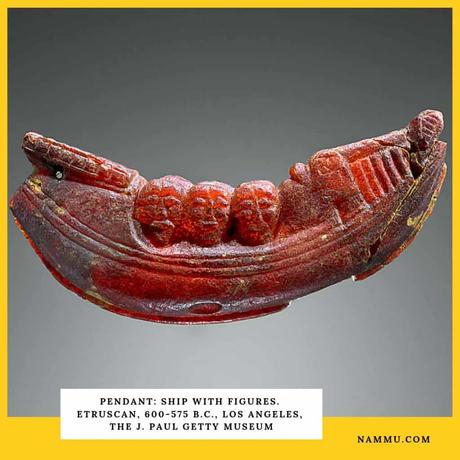
Perhaps because of its rarity so far from its source, amber was particularly prized in the Near East where it was largely reserved for and even became a symbol of royal power and status. Priests were another group who wore amber as a mark of distinction. Tests have revealed that amber found at sites across the Levant and Near East came from the Baltic.
Tests on the amber found in Mycenaean shaft graves indicate that it largely came from the Baltic, and similar tests have shown that many amber pieces found in the Near East came from Mycenaean workshops. Amber beads found on the Bronze Age Uluburun shipwreck (bay of Antalya, Turkey) further attest to the trade of amber in this period.
Amber in Ancient Egypt
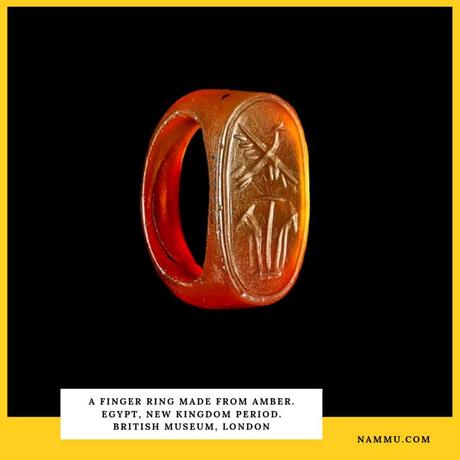
Already mysterious because nobody was quite sure where it actually came from, many ancient peoples regarded amber as a somewhat mystical material capable of protecting the wearer in some way.
The use of amulets for just such a purpose was especially common in ancient Egypt and Greece, so to make the object (which could be almost anything from miniature representations of gods to body parts) doubly powerful, amber was a good choice. Not only a prevention against misfortune, amber, it was thought, also had healing powers.
Amber is a rarer find in ancient Egypt but amber beaded jewellery and rings have been found in several tombs there.
From the Pliny's Natural History, we know that Ancient Egyptians were calling amber a sacal what is actually simply meaning the "rock". It is probably the first documented guessing about the nature of amber.
Amber in Ancient Greece
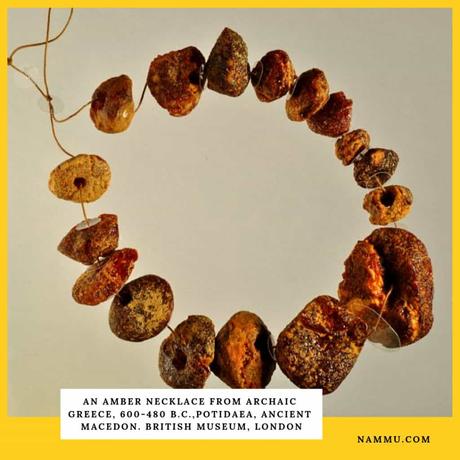
Amber goods are a common feature of Archaic Greek art but the material seems to have gone out of fashion by the Classical period.
Ancient Greeks believed that amber came from the tears of mourning Heliades, that became a poplar trees, after their brother - Phaeton (son of sun-god Helios and sea-nymph Clymene) was killed by Zeus for the attempt to move the Sun along the sky. They called amber an electron, meaning "beaming Sun". Visit our Amber Stone Legends post to read the myth of Phaethon and Sun Chariot.
Nicias, Athenian politician and general, had its own version on appearance of amber that was quite popular among Greek aristocrats. He was sure that amber is a moisture from the sun rays. And that these rays, at the moment of the sun's setting, strike with the greatest force upon the surface of the soil, leaving there an unctuous sweat. Which is carried off by the tides of the Ocean, and thrown up upon the shores of Germany.
Amber in Ancient Rome
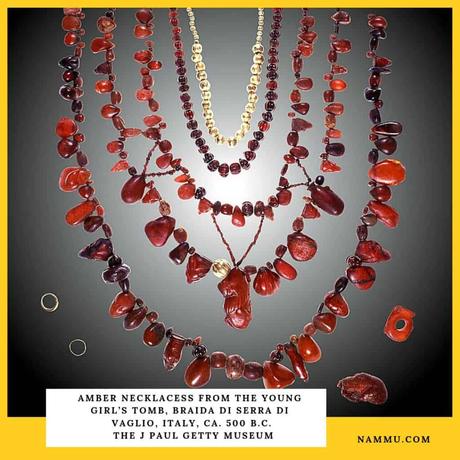
Continuous debates were stressing an Ancient Rome. Philosophers could not reach the agreement of amber origins assuming that it can be a vegetable, a mineral or a faunal product, as well as produced by heated lake mud.
In its Natural History, Pliny passes over accounts that range from the theory that amber was moisture from the sun's rays to the hypothesis that it was produced by heated lake mud before offering his own scientific conclusion:
amber is formed from the sap of a species of pine, and, hardened either by frost, heat, or the sea, it is washed up on the shores of the mainland, being swept along so easily that it seems to hover in the water without settling on the sea bed."
Amber was always popular in Ancient Rome. When the popuarity of amber in Ancient Greece and other countries declined, the Romans ensured amber made a comeback across the Mediterranean. They also had a lasting influence on the material's name as the Latin name ambrum led to the Arab word anbar which, in turn, led to the modern English term amber.
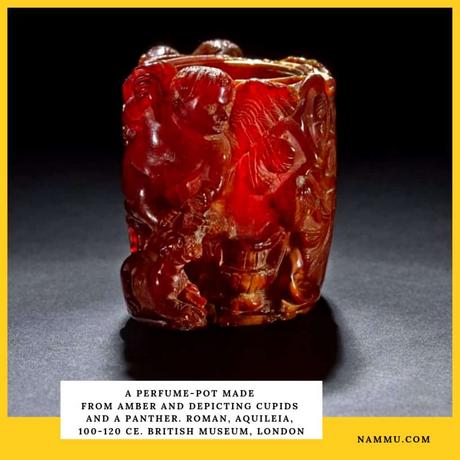
Prized and fashionable again, amber was imported, as before, via the rivers of Germania. Tribes in Germania Libera ("free Germany", part of Germany free of Roman cntrol) were no longer merely trading on the raw material either but had set up their own workshops so that they could trade the finished articles with Rome. Aquileia in central Italy, in particular, became a noted centre of production between the 1st and 3rd century CE.
Amber was used to make jewellery, figurines, handles, and even small containers and goblets. That certain amber pieces could fetch very high prices as is attested by Pliny the Elder in the following extract from his Natural History:
So highly valued is this as an object of luxury, that a very diminutive human effigy, made of amber, has been known to sell at a higher price than living men even, in stout and vigorous health. (Book 37:12.2)
Romans also believed in a wide range of magical properties related to amber. Roman cemeteries, for example, and especially those in the north-western provinces, often have child burials containing amber beads which were likely placed there to function as amulets.
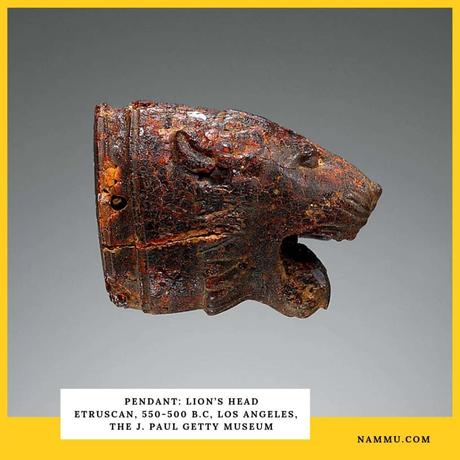
Pliny notes in his Natural History that some people believed amber could help with problems specifically connected to the tonsils, mouth, and throat, as well as mental disorders and bladder problems. Amber was even ground and mixed with rose oil and honey to treat eye and ear infections.
Considering that amber is, after all, a natural substance and that it contains succinic acid, which was used in medicines prior to the use of antibiotics, perhaps the ancient belief in its medicinal qualities is not quite so fanciful.
Amber Etymology
India - Kah Ruba
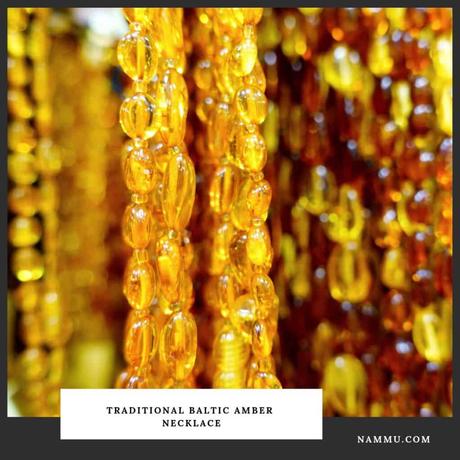
Nowadays, there is the whole separate group of amber names among the Asian countries that sound fairly alike. The Turkish name for amber - karabe, Arabic word kahroba, Hindi - kaharuva, Persian - kahraba, which translates roughly to electricity and is based on amber's electrostatic property of attracting straw, feathers and etc.
Undoubtedly, it is hard to identify which word came first, but there is a strong argument towards idea that initially all mentioned above amber names came from the Indian or Asian Indian kah ruba or kahruba, which means raw rubber or straw-rubber.
Finally, the ancients noticed that amber, when rubbed (and so producing a negative charge), is capable of attraction. The ability to attract light objects such as dried grasses or wheat chaff led to the Indians calling amber kahruba or 'straw-robber'. This was yet another quality which added to the mystery and allure of amber.
Arabic countries - Ambergris, Ambar
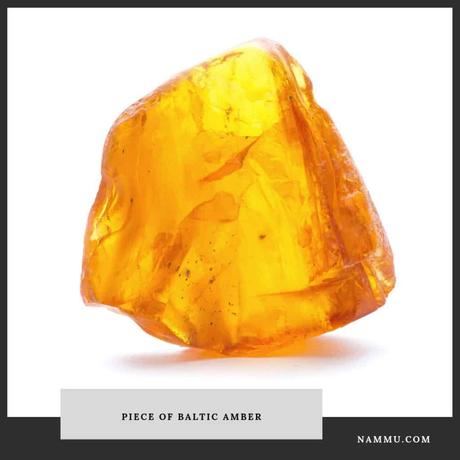
Today, there are various suggestions when and how did the most famous name for this fossil resin occur. Mostly, scientists agree that the English word amber derives either from Arabic - anbar ("what floats in the sea") or Middle Persian, Middle Latin - ambar or Middle French - ambre.
However, what most scientists forget in this regard is that the following name emerged probably due to the very massive and interesting confusion between ambergris and amber. Read our post for details - Amber Names in Various Nations.
Ancient Egypt - Sacal
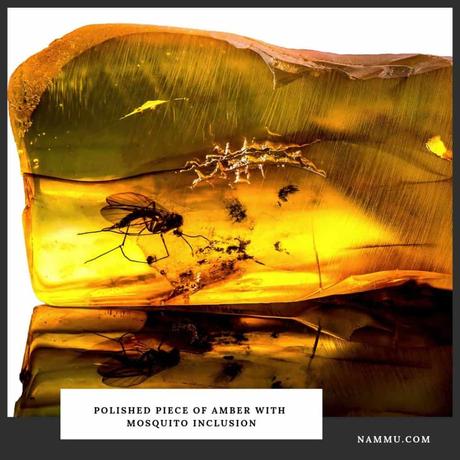
The first documented citation of the Egyptian name for amber was found in the works of Pliny the Elder.
Ancient Greece - Electron
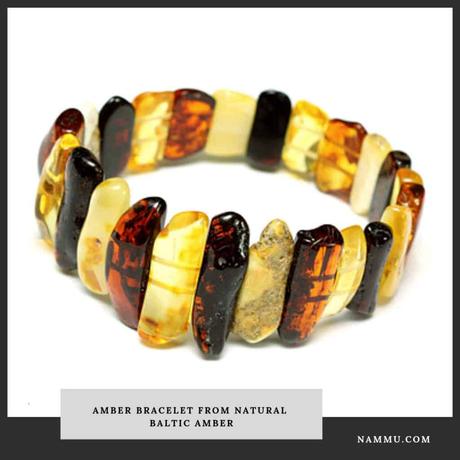
The standard Greek word for amber was The derivation of this word is uncertain, although scientists have suggested that it may have connections with helko, meaning " to draw or attract", or with aleko, meaning " to ward off evil ". What is not a surprise, taking into account amber electromagnetic properties and its typical use for creation of amulets.
The appearance of this name is also suggested to be connected to the old Greek and Roman myth. There were few variations to this myth, but mainly it sounds fairly alike. Here is, for example, the one retold by Ovid.
The Roman writer describes the old belief that amber was nothing less than the crystallised tears of Clymene and her daughters who had been transformed in their grief to poplar trees following the tragic death of Phaethon.
Clymene's dashing young son had foolishly lost control of the sun-chariot of his father, the sun god Helios, when he had tried to ride it across the sky.
In order to prevent the earth from being scorched by the falling sun, Zeus had felt compelled to strike Phaethon down with one of his thunderbolts. Hence the Greeks called amber electrum after their name for the sun, elector.
Ancient Rome - Ambrum, Succinum
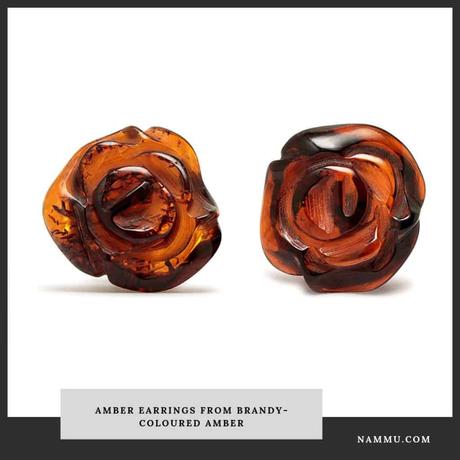
When at some point in time, amber popularity declined, the Romans ensured amber made a comeback across the Mediterranean. They also had a lasting influence on the material's name as the Latin name ambrum led to the Arab word anbar which, in turn, led to the modern English term amber.
Ancient Romans at its times had no doubt that amber was a product of the islands of the Northern Ocean (Baltic region), and that it was the substance by the Germans called "glæsum".
Moreover, according to the Pliny the Elder, Romans knew precisely what origins of amber were and therefore had a specific name for it - succinum. Consequently, that gave a rise to the current name of the most important healing ingredient in amber - succinic acid.
Germany - Glaseum, Bernstein
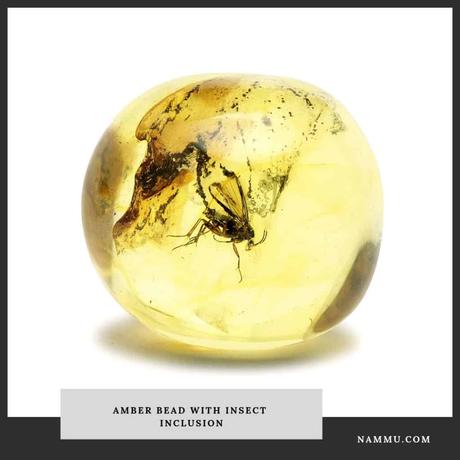
The quality of beaming, or reflecting the sun, is also suggested by the old Germanicword for amber, glaes, or glese, recorded in some ancient Latin sources as glaseum, the same word that was used in the period for glass.
The current German word for amber, going back to thirteenth-century Middle Low German, is Bernstein and means " burning stone". The reason for the following name lies in the nature of the amber.
Syria - Harpax
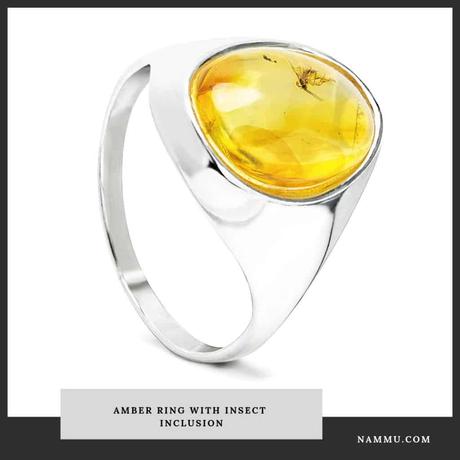
According to the same work of Pliny the Elder, The Natural History, Nicias mentioned that in Syria the women made the whirls of their spindles from amber, and used name to refer to it. Following name comes from the circumstance that amber attracts leaves towards it, chaff, and the light fringe of tissues. In Greek harpax means " a thief" or " one who snatches ".
China - Hupo, Tiger's Soul
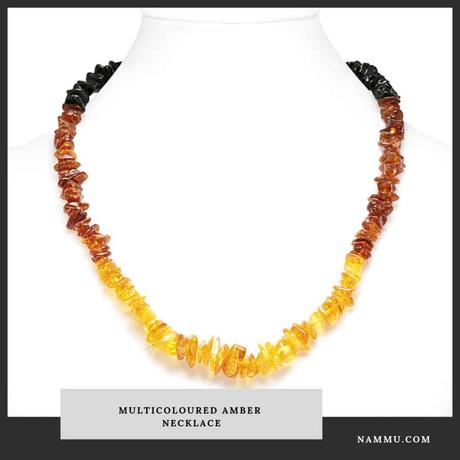
When it comes to the amber names, there is an ancient saying in China:
When the tiger dies, its soul enters the earth and transforms into stone.
By this saying, Chinese people refer to the droplets of amber. So the material is called tiger's soul: hupo (the po is the bodily soul; there are also spirit souls, called hun, that can roam about, but the po goes into the ground).
Lithuania - Gintaras
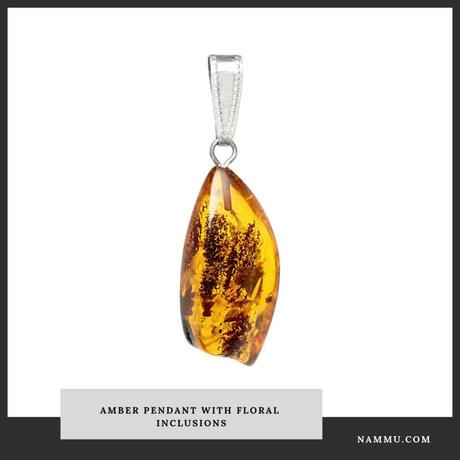
Nowadays, there is the whole separate group of amber names among the Slavic countries that sound fairly alike - Polish - Jantar, Ukrainian, Belorussian - Янтар (Yantar), Russian- Янтарь (Yantar'), Latvian - Dzintars and Lithuanian - Gintaras, signifying
the verb " to protect ".
Amber Age and Geology
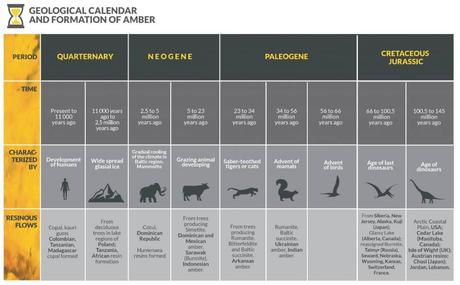
Amber according to various sources appears in the upper Carboniferous period, what is 323 - 298 million years ago.
The oldest fossil remains found inside amber belong to the period of Lower Cretaceous ( 145 - 100 million years ago) and hold great scientific insight to environments of the past. These findings were made in the mountains of Lebanon, to the southeast of the country's capital - Beirut.
One of the earth's oldest natural treasures, Lebanese amber, which contains the earliest known representatives of many insect groups, unlocks the secrets of a little-known world populated by dinosaurs, pterosaurs and cycads. Here we must say that only by microscopic remnants of insects and plants, together with the petals of flowers, spores and seeds, scientists recreate the flora and fauna on Earth millions of years ago. Even dinosaurs. In 2016, a 99 million year old feathered dinosaur tail was found preserved in amber.
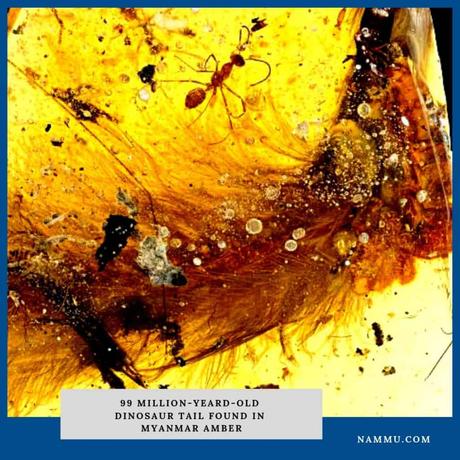
However, typically your amber is way younger than that. Only small quantities of amber reach mentioned above age of 100+ million years and even then, they are mostly used by the scientists to study the life on Earth in the times of dinosaurs. So, in overall, the amber you can freely purchase today on a market is usually of 65 - 23 million years old. Why is that? The answer is pretty simple.
Most amber around the world was formed in the Paleogene period (65 - 23 million years ago) and only very small fraction of amber was formed in Neogenic period (23 - 2,5 million years ago).
What's the most curious here, is that during the same (Paleogene) period the Earth was hit by The Paleocene-Eocene Thermal Maximum (PETM). What exactly happened?
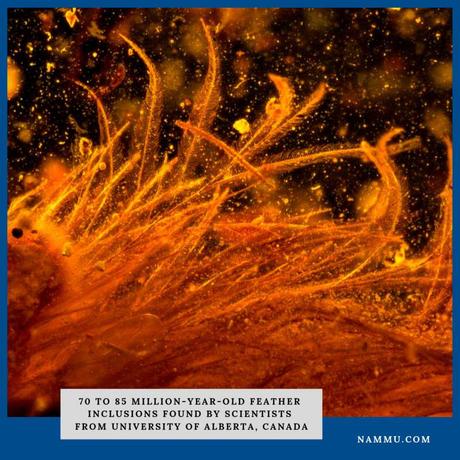
Approximately 55.5 million years ago global temperature increased by 5 - 8°C. Although it is now widely accepted that the PETM represents a "case study" for global warming and massive carbon input to Earth's surface, the cause, details and overall significance of the event remain perplexing.
We can only assume that increased temperatures either caused excessive resin production from "amber trees" or just melted already produced resins, starting the amberisation process. What is surely clear, is that this event is closely related to the huge amount of resins produced in Paleogene period that later was transformed into Baltic and Ukrainian amber.
The most famous and wide spread around the world - Baltic and Ukrainian amber belong exactly to Paleogene period. Baltic amber, in particular, constitutes not less than 90% of the bulk of amber already collected nowadays throughout the world. It consists at 98% of Pinus succinifera pine resin and there is no Baltic amber older than 54 million years.

Taking into account that Baltic amber is the most widespread around the world, chances are, your amber is less than 54 million years old, and, for sure, older than 11 000 years. Fossilized resin of 10 000 old and younger is not an amber, but a copal. Sometimes, untrustworthy sellers process copal and sell it as amber.
Check our How Old is Amber post to learn more about the age of amber in different countries and deposits, including Indonesian, Dominican, Canadian, Indian, Mexican and USA amber.
Amber Inclusions and Geology

As you know, amber is a fossilized resin of pre-historic trees. And due to its organic origins, amber has an amazing property - for millions of years it can keep insects, small animals and particles of plants inside, preventing them from collapsing.
The resin, flowing down the trunks of the pines, often became a trap for small inhabitants of the amber forest. Insects themselves sat down on the resin, attracted by its color and smell. Alternatively, they could have been taken down by a gust of wind, and also be caught in amber drop that fell from a broken branch. Large insects burst from the resin, and the small ones were covered by the later resin inflows.
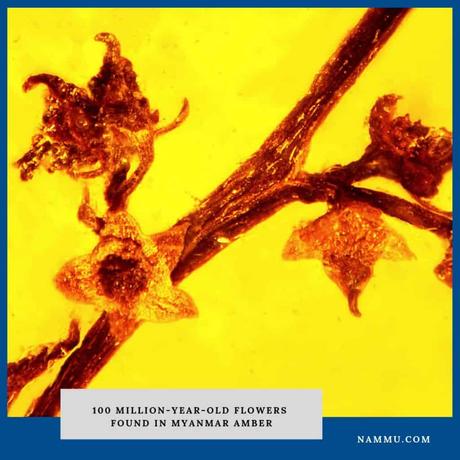
Not only insects and branches can be found in amber. Sometimes it is even possible to find small animals - for example, lizards. However, these are very rare inclusions - only seven lizards stored in amber were found around the world.
Some huge gerontological discoveries were made thanks to inclusions in amber, like this spider/scorpion preserved in amber - staff of your nightmares.

The remains of the crust, feathers of birds, scraps of animal fur, spores and seeds of plants, and even drops of water (rain or dew), which did not evaporate, confirmed forever the impermeability of the "amber tomb." In addition to these, air bubbles and various minerals are found in amber. Such substances preserved in amber are called inclusions.
Thanks to amber and inclusions stored in it, scientists now know what animals, insects and plant were inhabiting earth millions of years ago. Check our Amber Inclusions post to learn more about different extraordinaire animal, floral and mineral inclusions found in amber. Check our two other posts to learn about two major shocking discoveries made in recent years due to dinosaur tail and spider with scorpion tail found preserved in amber.
Amber Extraction and Processing
Amber Extraction
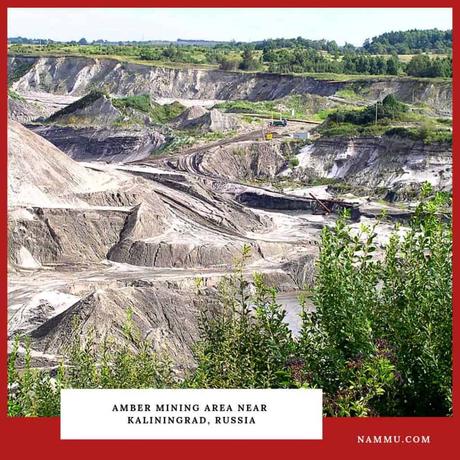
The main productive layer, in which amber is abundant, is the so-called "blue ground" or "blue earth". This layer got its name due to the high contents of glauconite mineral, giving it a bluish-green hue, which, in general, is not very obvious due to the prevalence of dark gray earthy tones.
The layer of "blue ground" with a thickness of 2 to 12 meters lies at a depth of 43-50 meters. On the seabed, it is exposed and is destroyed during storms. Part of the amber contained in it is emitted by waves to the shore, another part is redeposited in a different place along seabed. Where amber is waved on a shore, than you can pick it up by on a beach after stormy weather. Check next question to learn where YOU can find your own piece of amber!
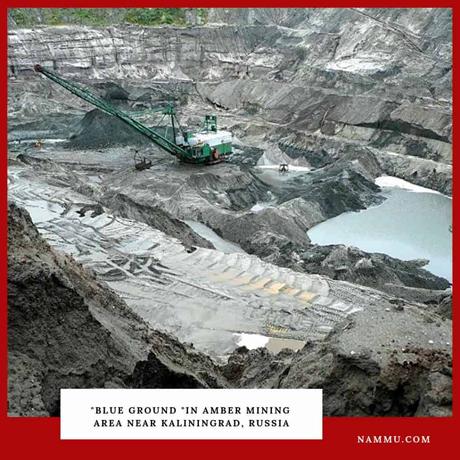
When we are talking about amber land deposits and extraction process, it must b e said that nowadays amber extraction is carried on in the open-cast mines, being a composite, highly-mechanized production.
Originally the over-burden layers are exploited by excavator, and transported in the slag-heap by rails.
Than, the blue earth, which is being washed out by the water from the ground, is going to the amber factory through the grate with meshes 5 cm in diameter, where the workers are picking out the biggest pieces of the mineral.
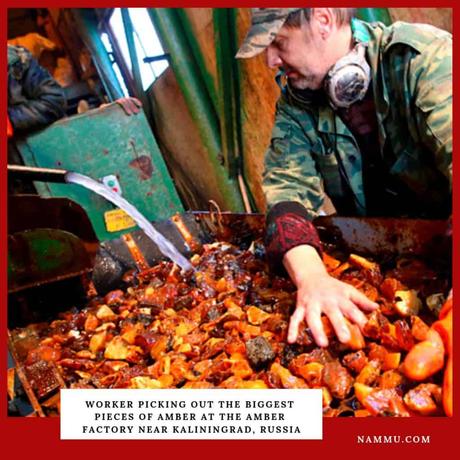
The material, which has remained, is passed through the system of arc sieves, where it goes through its initial washing and dehydrating. Then, in the separator, this mass is exfoliated in a special solution of a density lower than amber; the heavy fractions are accumulating at the bottom, and the small amber as well as pieces of wood emerge at the surface. They are being separated later using the same grates but with meshes of 4 cm or 3 cm oe even 2 cm.
All extracted raw amber falls into the following categories: amber for jewelry production and amber for industrial purposes. Industrial amber is usually of fine fraction, black and of no interest to goldsmiths. It is used for producing high quality varnish and as well as musical instruments and car varnish of premium class.
Where Can I Find Amber?
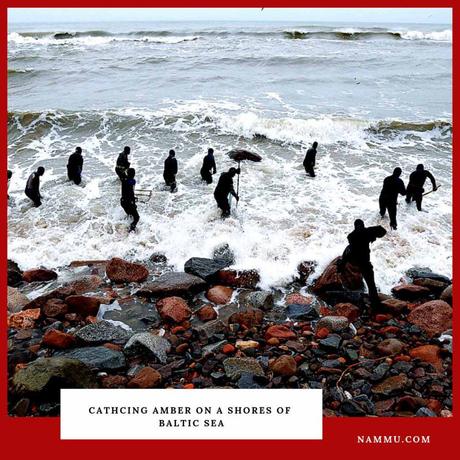
Well, amber can be found on land or sea. The geographical spread of land amber is quite extensive. However, the problem here is that, although the process of amber extraction itself is not complicated (much easier than the process of extraction of precious stones), you will not be able to do it yourself without special equipment. But don't worry. You still have an option - the shores of the Baltic sea. Yes, you heard me right. You can find it on a beach of the Baltic sea!
At the shores of the Baltic Sea and the North Sea, amber can be found after storms (if they came from the right direction), and during low-tide. Because of its specific density (1.05 - 1.1), amber is slightly lighter than sea water and can float on the surface. So, it can be washed upon a beach imbedded in seaweed or can lie among greyish remnants of crawfish and shrimps as well as among small, black remnants of wood. Sea amber is usually collected as it is washed on the shore or directly from the water by use of nets (especially in the Baltic countries).
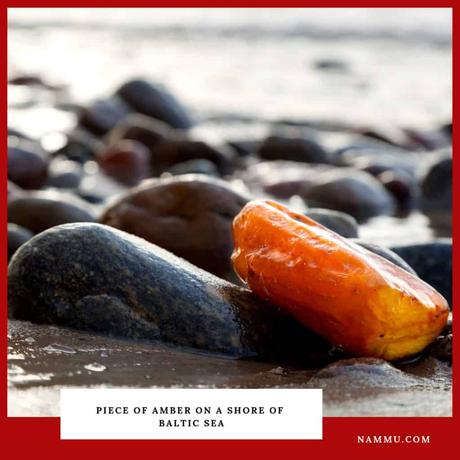
Sea amber looks usually better than amber from mines because the water movement polishes the stones so that they are often found as clear, shiny stones without crust.
Collecting amber in the summer months doesn't bring satisfying results because then the water has a lower density (because of its thermal expansion) and amber is not floating on the surface that much. During spring, autumn and especially winter the density of salt water is slightly higher, so that amber swims, being caught in seaweed which then can be driven to the beach, by current or waves. Ocean and sea water gets more dense as temperature goes down. So, the colder the water, the more dense it is, the more chances you have to find amber washed on a shore or floating in water.
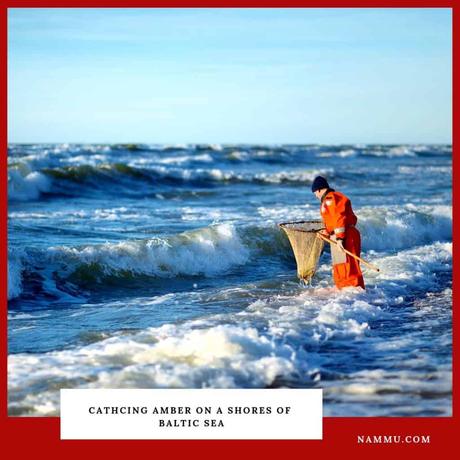
If a piece of wet amber on a beach doesn't reflect the sunlight, it is not easy being identified as real amber. One simply cannot pick up all yellowish or brownish stones for inspection, particularly if the beach is covered with all kind of stones! Therefore here are some helpful information for beginners:
Amber feels warm to the skin because it is an organic material. That helps amber collectors to distinguish between dull amber pieces and normal stones. An even better method to identify amber is clicking the "stone" against ones teeth. Amber does not click like a mineral, but rather feels like plastic.
Amber Color and Classification

Amber colours vary greatly. From white, yellow, brown to red, greenish, bluish, gray and even black amber. In addition to that, it can be absolutely transparent or absolutely opaque. However, although there are around 400 different shades that amber can have, we still can differentiate some of the most common - 7 main colours of amber.
White Amber: Milky or Rotten, Royal or Bony
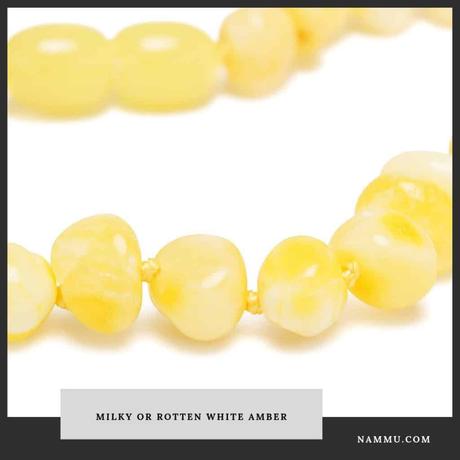
White amberas it comes from its name has white color and is not translucent. It always looks more like an elephant ivory. However, you should keep in mind that there are two types of white amber - "royal" or "bony" and "milky" or "rotten" white amber. Usually they are distinguished by texture, "natural ornamentation", overall look and price.
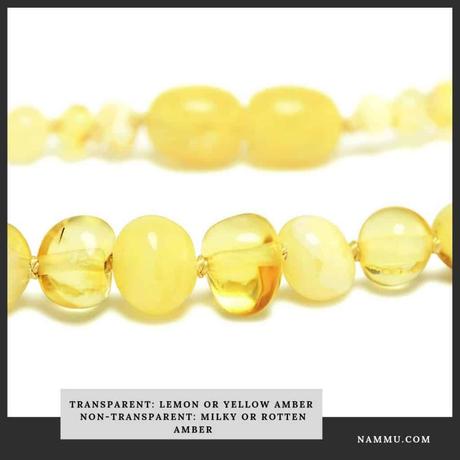
Transparent amber (with a yellowish shade) that is usually called lemon takes up to 10% of all amber, but is mostly found in small pieces. Big transparent amber pieces are especially rare and valuable.
Transparent lemon colour of amber could be called " primary"- fresh tree resin looks like this. Resin was flowing somewhere in a shady place; that is why turpens, the volatile components of resin evaporated slowly and did not make the resin turbid with gas bubbles, so the amber remained transparent.
When it comes to yellow color of this natural resin, it is found in Baltic Sea region and is valued by most individuals due to high quality of amber. How light or dark the yellow color of amber is depends on the number of gas bubbles found in this gemstone. The higher the number of bubbles the lighter shade of yellow amber will be.
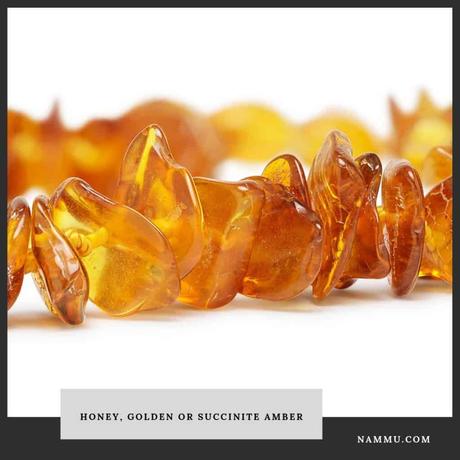
This color of amber is the most typical one since about 70% or two-thirds of the total bulk collected of this natural resin comes in it. Therefore, "honey", "golden" amber or even "succinite" (as it sometimes called) is also the most common amber, which is extracted for industrial purposes.
Succinites or honey amber differ from other types of amber not only in colours, but also in composition. Honey amber contains about 8% succinic acid and therefore termed succinite. When people say Succinites, they refer exactly to amber that is usually being called honey.
The initial place this amber was found is the Baltic Sea area, and this area is still the best producer of amber both in quality and quantity. However, wherever old fossilized trees can be found, amber may be found as well. Nevertheless, sea amber is usually superior to mined amber because the waves provide polish, a uniform quality and there is no crust on the surface.
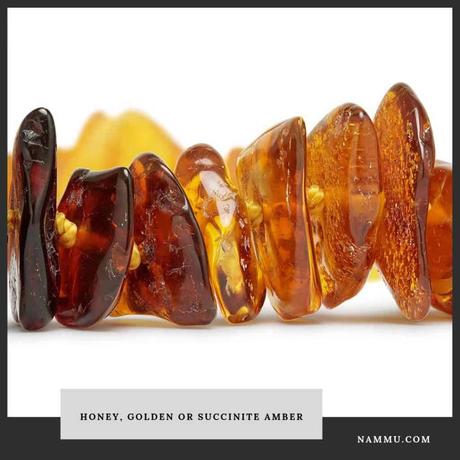
So what colours can honey amber have? Dark yellow, golden, slightly orange and even brownish amber pieces are found all around the world.
How was it formed? Resin was flowing from trees in the heat of the sun and the volatile components of resin evaporated and made them turbid - thousands of small gas bubbles were formed. And as we said before, the more bubbles, the lighter the shade of yellow.
Cognac is a usual colour of treated amber, even if initially it was transparent yellow, but you should not think of it as something less. Why? Let us explain.
Treated amber is a usual and typical natural amber that was just heated artificially by people to clarify cloudy material from air trapped inside and thus to make its color richer, more beautiful and transparent. When amber is autoclaved (treated with high pressure saturated steam at about 120°C/248°F, which results in inner cracking), slow heating clears the color, makes it more shimmering and brighter than natural.
That's also how decorative bubbles (or so-called "scales" or "sun spangles") and shiny discs are created. To reach following result, amber heat-treatment is conducted in hot oil. When autoclaved, small cracks appear in amber to let out the air from bubbles. Performing this process in hot oil, allows it to penetrate the amber and fill in tiny bubbles which cause the cloudy appearance, creating a very beautiful "scales" inside.
So, it is like polishing and shaping a diamond or emerald. The only difference, is that for amber to look more shiny and vibrant it needs to be heat-treated.
Heat-treating can also darken the color and is usually used to create the very famous cognac colour. The steam penetrates the amber's structure and alter its color.
Blue amber: Royal Blue and Blue Baltic amber
A rare and particularly revered is amber with a bluish tinge. As with white amber, there are different names and types of it.
Royal Blue amber. This is the rarest shade of amber (probably just two pieces of a thousand) and the most valuable. It is almost completely found in the Dominican Republic and is fairly new to the gem industry. And even through it is quite new, less and less real royal blue amber could be found, so this color became now almost extinct.
Royal Blue amber has a fascinating property - the color of a piece will change when a fluorescent light is shown on it. It will be a dazzling bright blue because the fluorescents inside of it will react to the light. However, the same piece will look yellow or brownish when a white light source, such as the natural sunlight, shines from behind it.
Blue Baltic amber. Blue Baltic amber differs from the blue Dominican amber (Royal Rlue). Bluish shade is visible in the Dominican amber only by a special light. For Baltic Blue amber to look blue, it must be caught in the right light, or it will look like every other piece of yellow-brown amber.
Today it is believed that Baltic blue amber was formed when resin floated by the rivers to the peninsula of Sambia (Kaliningrad region, Russia) and it got into soil saturated by pyrites (FeS2). Intrusions of pyrites got into small cracks of resin. Most frequently this shade is found in white amber.
Green amber is very popular. And even through it only accounts for about two percent of the amber bulk, there is enough of it found to supply the world. As it is still quite a rare type of amber, green amber of high quality is used for making expensive jewelry and also purchased by collectors. The cost goes up as the shade gets greener. It is the same for any other amber colour. So, lighter amber, or yellow-green amber is less expensive and more affordable.
Its shades are ranging from the light-green to slight emerald color. Such amazing amber colors are obtained by soil and plant particles, that have been caught in a resin millions of years ago. If it to be more precise, greenish shade and sometimes "crystal"/"sugar" structure was formed, after resin fell on plants and reacted with pigment chlorophyll that could be found in plants. Because of the crystal structure, sometimes green amber is called "sugar" amber.
The Dominican Republic is known for the best specimens of green amber, but it still can be found in Indonesia, Italy and Mexico.
Green amber can also be treated by heating it and it will become even more beautiful as it becomes more transparent.
Black or Cherry and Red Amber or Dragon Blood
Black or cherry amber accounts for about 15% of the amber found, so this is a rather frequent colour of amber. However, it is not actually pure fossilized tree resin. This color was formed when tree resin was mixed with soil, debris, remains of the tree from which it came or some other inclusions. But as you can see, that does not make it any less appetizing.
If you would hold any piece of black amber against light you would soon notice that it is, in fact, another color. Usually it is either brown or dark red. Due to this some people even claim that amber in black color does not even exist. At Nammu we believe in all shades of amber, so for us black amber is black!
Natural red shade of amber is especially rare. Only about one in every two hundred amber specimens are really red. This amber is very and very expensive per gram. The highest quality and the most valuable amber of cherry or dark red colour is often called the "blood of the dragon". However, red amber in shades can vary from orange to dark red.
Red amber is not transparent and can be polished.
Red amber (all shades) was formed when the amber stayed in the air for a long time and undergone oxidation process combined with either heat of the sun or fire in the forest. Something similar is being done when heat-treating amber artificially, when creating cognac colour.
However, when it comes to the very famous dark red, almost sanguineous color of dragon blood amber, scientists established that it is caused by forest fires: due to the strong heat amber pieces have changed their color to dark red shade.
Unfortunately natural red amber (of any shade) is so rare, that even finding a correct picture of it is a challenge. However, you still can buy red amber on a market, even if only a treated one. Red (widely available on a market) colour of amber is mostly obtained artificially by heating transparent amber (oxidizing it), but heated amber loses its natural properties and becomes more transparent.
Amber Imitations

Nowadays fake Baltic amber has flooded the market, and most people do not even realize it. People intend to purchase these amber pieces and think of them as genuine because they cannot tell the difference. Sadly, many of these people are exploited as merchants who sell fake amber usually do so at a high price.
Of course, any ordinary person can be deceived and may not be able to tell the difference. However, a person with a good understanding of the origins and characteristics of the stone, as well as its texture and quality, can differentiate fake amber from real amber.
As a shop that sells only 100% natural certified amber, Nammu has a vast experience in how to detect real amber from fake and this is what we want you to know. Let us share our experience.
There are 7 main and simple tests you can make at home to identify fake amber, but some of them can result in destroying the piece and some of them will require a special equipment. Almost all of the will require you purchasing amber piece before testing it, as only few test can be performed directly in a shop. If you want to learn in detail about all of them, check our post on how to detect fake amber.
Here we will tell you about the process you need to go through to make sure your amber is real.
Testing Amber in Shop

Step 1. Make visual evaluation. Real Amber beads tend to be unique in their appearance so you should look for imperfections when inspecting them.
Some common imperfections are tiny cracks or small air bubbles. Also beads should vary a little in size and its shape shouldn't be always round.
Step 2. Touch it and weight it. Amber is very lightweight and warm to the touch. When you touch amber it tends to be a little warm, which is not the case with most other fakes.
Large beads of natural amber (total weight of 70 - 80 grams) look very impressive. Counterfeits of plastic and glass, having a high density, are modest in size - but weigh a lot. Trick 1: Figure out how much grams your mobile phone weights, take it into one hand and amber into another, if amber feels heavier than it might be glass.

If the weight and coolness-to-touch of these glassy materials doesn't quickly distinguish them, a light tap to your front tooth will do the trick. Trick 2: Glass and stones have an unmistakable hard rattle against a tooth whereas amber has just a very light plastic tap.
Step 3. Rub it. The Friction test is simple. Rub the piece briskly back and forth across a piece of dry cloth. Copal will usually become SLIGHTLY tacky to the touch as a result of the heat created during the rubbing process. Amber will remain smooth and in dry conditions will become slightly electrostatic (you can test this by trying to attract thin paper confetti or piece of hair).
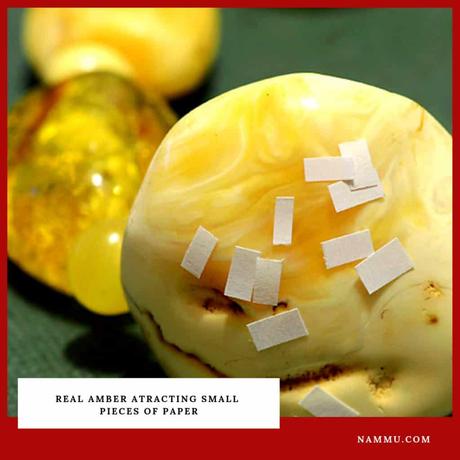
Alternatively, when you rub real amber on the palm of your hand, it is said to give off its iconic smell. This occurs due to the heating effect produced by friction between your hand and the amber piece. If you employ this method and there is no pine-tree scent, then your amber piece is most likely not authentic.
This test might be a bit too difficult for individuals who are not very familiar with this natural resin. This is mainly because you need to know how the difference between smell of Copal and Amber. Scent of true Baltic Amber tends to be stronger than compared with Copal. And in case you are dealing with other type of fake you should feel plastic smell once a bead is heated.
Vigorous friction of amber on the fabric or palm to a significant increase in the temperature of the stone helps to feel a weak resinous aroma, reminiscent of the smell of pine or turpentine.
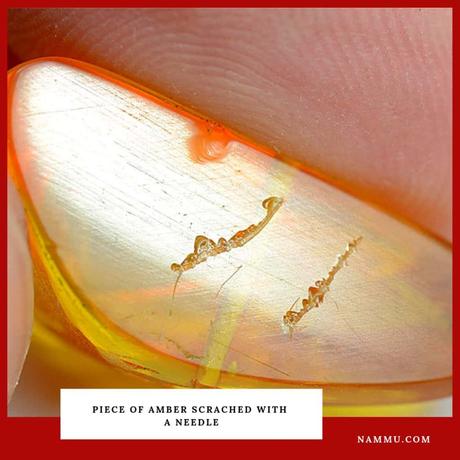
Step 4. Scratch test. The density of amber on the Mohs scale is 2.0 - 2.5. This means that it can not be scratched with a fingernail. But copal - similar to amber resin beans - on the contrary, is easily damaged by the same nail. Its hardness is only 1.5 units by Mohs. Glass and plastic are noticeably harder than amber: this difference is felt even by fingers.
By now, you should already know if you amber is glass (weight, teeth test), plastic (heating test) and copal (scratch test). But you can go even further, as some plastics can have electrostatic properties or there might be problems with heating test and amber aroma. So just to be sure - Step 5.
Note: UV light is the part of sun light that causes sunburns. Never look directly at UV bulbs. Wear UV filtering goggles or glasses if using this low-level ultraviolet light source for extended periods.
Testing Amber at Home
There are few more methods you can use to identify amber imitation. But you will not be allowed to employ them in a regular shop because some of the can cause damage to your jewelry.
Method 1. Salty Water Test.This test is extremely easy and effective. Natural amber in most cases floats in salty water and sinks in fresh water. This is how in some places, for example the Baltic Coast, you can find it washed up on the shore after stormy weather.
How to prepare a solution? Dilute 8-10 teaspoons of salt in a glass of water. Follow proportion if you need more water. Put jewelry in solution, if it sinks - it is not amber. If it floats, it is either amber or copal. Than you can proceed with rubbing test to identify amber from copal.
The main drawback of this method is that it is not very suitable for testing jewelry that has a lot of metal or other components in it; however it works well for loose beads, bracelets, necklaces.
Method 2. Heating test.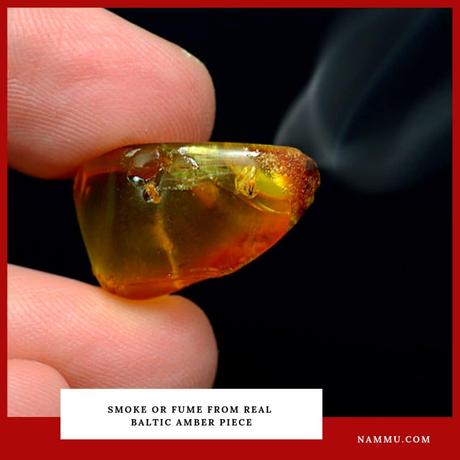
We view this method of testing as too destructive to be beneficial. But some collectors and jewellers believe that it is one of the most reliable home-methods to distinguish amber from modern and early plastics and that it can be performed in a manner that avoids destroying the test subject.
When heated, amber produces a sooty, but pleasant, slightly sweet, pine-tree smell. We do not recommend this method for distinguishing amber from copal because copal also produces a natural resinous smell when heated - it smells different than amber (sweeter and more like frankencense), but you need some experience to tell the difference. If you want to perform this test correctly, follow our direction in this post: How to Identify Fake Amber?
Method 3. Scratch test.
Scratch test is usually preferred when not expensive amber is being tested. This is mainly because scratching on this gemstone can potentially damage it. You can use other methods to test amber without damage, but if you want - here is how to do it briefly. For detailed explanation and more pictures - see How to Identify Fake Amber?
How to perform a test? With the point of the knife, needle or razor scratch amber in an inconspicuous place. The real amber will crumble with small pieces that can be grinded into powder. The plastic will leave elastic shavings. Glass will not be scratched.
Method 4. Acetone or alcohol test.The acetone test is best reserved for raw specimens. It often leaves discoloration on the surface of the sample which will then need to be polished out. Remember, copal will be hopelessly spoiled by any reagent!
Acetone is a strong solvent which will dissolve copal, but not amber. It can be purchased at any beauty supply store. In a pinch, you can use an acetone based nail polish remover.
Simply apply a drop of acetone to the surface of the test subject and then let it evaporate. Copal will usually become slightly tacky. Amber will have no response. If you are suspicious of your results, apply another drop in the same location and repeat the test.
Same goes with 95% ethyl alcohol. If the surface doesn't become sticky and alcohol evaporates easily without leaving any spots on it, then you can be sure, the amber is real. If the surface sticks to your fingers and you see your fingerprints left on it, then this amber is definitely fake.
Some copal requires two applications to begin to dissolve. Importantly, some amber, especially collector's specimens, is treated with a protective coating - if you suspect this is the case with your piece, do not apply the acetone and will almost certainly dissolve the coating.
Amber Healing Properties
The amber healing properties became famous and widely used thanks to Hippocrates (460-377 BC), father of medicine. In his works, he has described various medicinal amber effects, amber qualities and methods of amber application that were later used by scientists until the Middle Ages.
Why was amber so widely used in medicine?
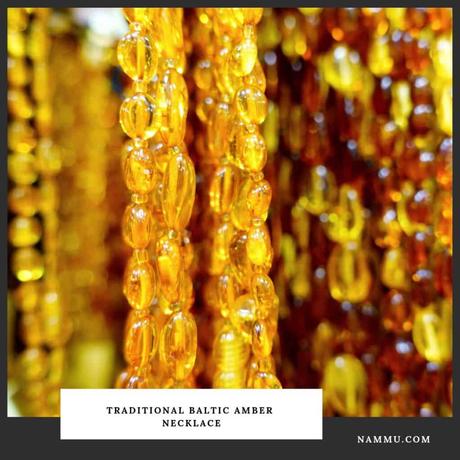
The answer lies in its composition. In its composition, amber has a substance - or ingredient - called Succinic Acid.
Moreover, sodern science finds that amber is almost completely made with useful elements for the human body: iodine, iron, magnesium, calcium, phosphorus, zinc, cobalt, barium and aluminum.
Succinic Acid is found in many contemporary plants and is a common and indispensable food ingredient. However, deficiencies of Succinic Acid are frequent as it is rarely found in nature. Even unripe gooseberries and rhubarb stalks, which are the richest in the acid, contain a thousand times less of the acid than the amber.
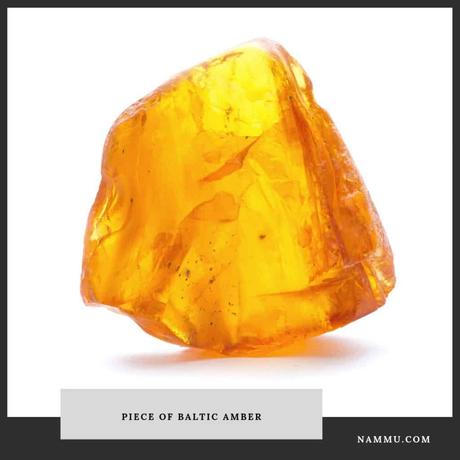
In the 1930's and 40's, European biochemists' discovered that succinic acid is an acid created naturally in every cell of the body capable of aerobic respiration, participating in the citric acid, or Krebs cycle. This is how carbohydrates, fats, and proteins are metabolized into energy.
Many people are unaware of the incredible influence that succinic acid has on our bodies. It is involved in several chemical processes, which are mostly related to our metabolism.

An ancient remedy that has been used for thousands of years, the highest quantity of succinic acid is found in Baltic Amber, which is found in the Baltic States. The Baltic Region is home to the largest known deposit of amber, also called Baltic amber or succinate.
Succinic acid is also found in animal tissues, as well as in plants all over the world. For pharmaceutical or home use, it is either extracted from amber or is manufactured synthetically.
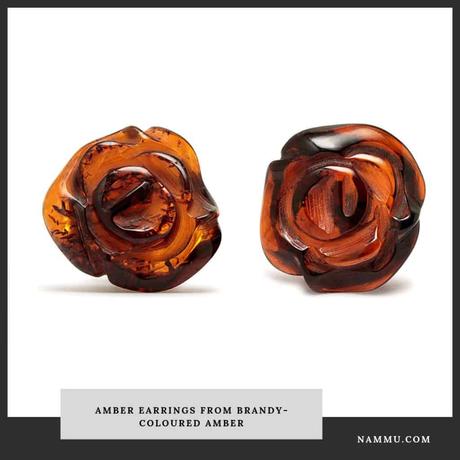
Current research shows that the unfavorable environmental conditions prevailing today block the natural flow of energy-related processes in cells. Blocks affect cellular metabolism and significantly weaken the immune system, but the natural energy of amber can stimulate its renewal. Furthermore, research held at the University of Hamburg, Germany confirmed the safe and positive effects of succinic and fumaric acids in cellular metabolism.
This is also confirmed by research carried out by a Kaliningrad-based doctor, Nikolai Moshkov (2002). He obtained fast and fully effective therapeutic results by rubbing very fine powder from pure energizing amber into the ill places (head, spine, thyroid gland, chest, limbs).
How can amber influence human's body?
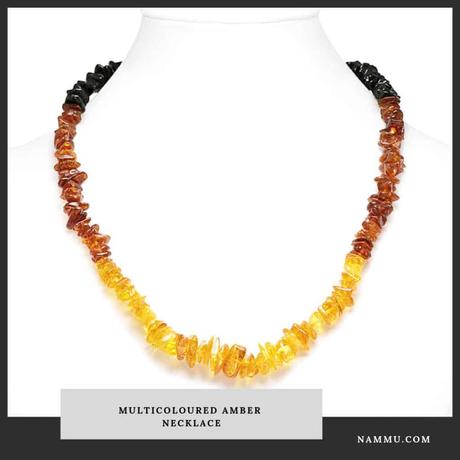
There are two different thoughts as to why wearing amber on the skin can have soothing and calming effects on both adults and teething children.
One thought suggests that when amber is worn on the skin, the skin's warmth releases miniscule amounts of healing oils from amber which are then absorbed through the skin into the bloodstream.
The other theory is based on scientific findings, which have shown that amber is electromagnetically alive and produces certain amounts of organic natural energy.
Healing Properties
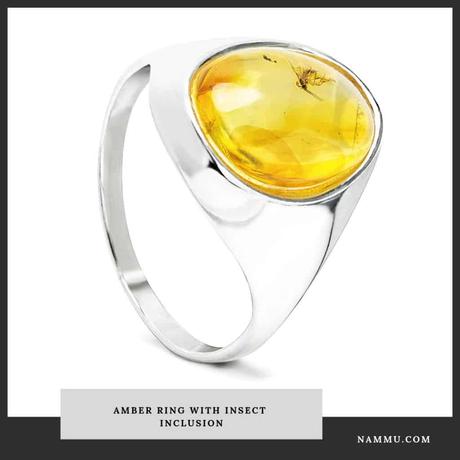
Succinic Acid (also called Amber Acid) has been used in Europe as a natural antibiotic and general curative for centuries. It was discovered in the year 1550 when Dr. Agricola from Germany distilled amber.
Succinic acid has special properties that relieve stress and anxiety. The acid aims to eliminate the root causes of stress by stimulating your brain and 'kick starting' it into functioning as it is used to.
Succinic acid protects cells from degeneration, and organism from illnesses and premature ageing. Recent research studies have also revealed succinic acid's ability to improve cellular respiration, as well as one's glucose metabolism, which allows the body to function optimally.
One more positive effect succinic acid has for cardiovascular illness. Succinic acid regulates cardiomyocyte. What this means is it helps the heart pump blood properly. This is good for people suffering from a cardiovascular disorder. Succinic acid has even been known to help prevent heart attacks.
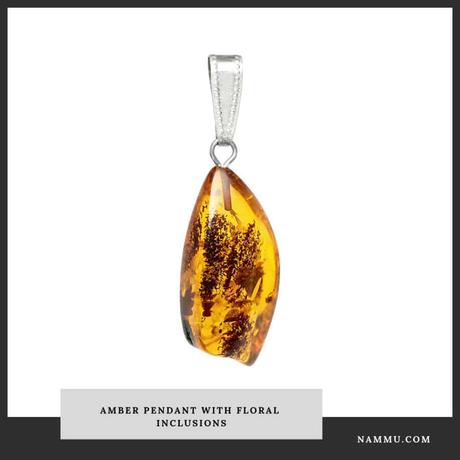
Succinic acid is one of the best fast-acting natural antioxidants. Although the name suggests something else, succinic acid is anti-inflammatory and contains many antioxidants. With various properties that alleviate pain, many patients wear amber on their wrists or the affected area for effective pain relief.
Nowadays, pharmaceuticals preventing the aging of human cells, use succinic acid as an inhibitor (an agent slowing down or totally stopping the loss of) of potassium ions and an antioxidant.
Even before these healing properties were fully known, a lot of superstition surrounded the use of amber. People believed that Baltic amber (succinic acid) could drive away evil spirits that caused colds or the flu. This superstition turned out to be true, as succinic acid does help strengthen the immune system, which in turn lowers your risk of contracting a cold or the flu.
Learn even more about it, together with real reviews from people all over the internet in our post - Amber Healing Properties. You can also subscribe and get the whole ebook about amber healing properties for FREE.
Magical Beliefs
Amber has an important effect on our minds. Current world problems and even day-to-day scuffles can cause you a lot of stress, which is bad for your overall health. Because succinic acid helps release stress and the buildup of chemicals, you experience a blissful feeling when wearing Baltic amber.
De-stressing is important because once you calm down you can focus on what is important in your life. Practicing de-stress techniques on a regular basis can lead to you dealing with stressful situations with greater ease in the long-term.
Amber aromatherapy uses amber as the main ingredient. It is frequently practiced in Eastern Europe, using natural stones from the Baltic coast.
The amber stone has a history of over 50 million years and a proven track record as a natural medicine, extremely valuable in curing illnesses, pains, complaints and disorders.
During the Middle Ages, amber aromatherapy cured and saved a significant number of people from death, including from the bubonic plague.
Europeans were among the first to recognize and credit amber's miraculous benefits for both mental and physical well-being. A common use of amber was to burn it and fumigate the rooms, letting its smoke fill the entire house.
Amber Treatment
Amber is relatively soft and so was an ideal material to be cut and carved into beads and other forms of jewellery since ancient times. Saws, files, and drills were used to create the desired shape and engraved designs.
Ancient jewellers from the Bronze Age onwards were already highly skilled in carving much harder semi-precious materials such as carnelian and garnet, so amber posed no particular challenge to their abilities. Amber also has the advantage that it can be polished using abrasives to produce an appealing gleam.
One significant disadvantage of the material is that it is susceptible to degradation. Fading over time following exposure to air, amber also becomes more opaque and so many pieces of ancient amber work do not, today, look quite as impressive as they did when they were first made.
But it will not be a problem, if you know how to treat it right. Follow our instructions and your amber will look magically for many years to come.
How to Clean Amber?
Take the rule of clearing jewelry of dust, grease, sweat and other contaminants after each use, then you will have no problems with their appearance during the longest possible term. With regular cleaning it is possible to wipe them thoroughly with a soft cloth, without using hard woolen or hard brushes.
While talking about cleaning, we can say that there are different suggestions and options for those who are interested.
From our side, we want to warn you that amber is very, very and very soft, fragile and special mineral that react badly to all the chemicals presented currently on the market. We suggest you to avoid completely using of any chemical cleaners or even soap for cleaning amber, use simple water. It is not recommended to clean amber in a soap solution, as it is an extremely sensitive mineral, and the modern composition of soap almost always contains chemical compounds. Do not put amber into the water for more than 10 minutes, because due to its structure amber absorbs water.
You can find detailed explanations what exactly cleaning methods, in what situations, and how we suggest to perform them in our How to Take Care of Amber post.
How to Store and Wear Amber?
Amber can grow dull with time, so if you keep it long enough, do not be upset, but better find out how to bring back the stone shine. It is recommended to adhere to several simple rules for storing amber, so that it does not lose its original appearance for the longest time, does not become cloudy and damaged.
Amber can easily be deformed under the mechanical influences, so handling it should be quite gentle, careful and attentive. You should not drop them or carelessly throw them on the table, because they can easily crack.
Do not put your amber jewelry on before hairspray and perfume are applied, because it will likely create a whitish coating on the amber that may be permanent. Contacts of amber with household detergents are also very undesirable.
Do not touch amber jewelry with dirty hands, for example stained with food. Sunflower oil, lard and other edible fats are especially harmful to this sun stone. Amber should be kept as far as possible from these products. In general, you always need to touch amber only with clean hands.
Even though amber is called a "sun stone", it reacts badly to the intensive and prolonged contact with the sun. As we said before, it should not be left for long under the scorching sun. Therefore, along with other natural stones, amber must be stored in a dark box.
Try not to leave amber for a long time in the open air - it can become covered with cracks and lose its fantastic brilliance.
Amber is a soft and fragile mineral, so it's best to keep each amber decoration separate from the rest, in a solid box with a velvet lining, so that the stones are not damaged, not scratching against each other, and not cracked when struck.
Find even more recommendations on how to properly store and wear amber for it to be as new the longest time possible in our How to Take Care of Amber post.
How Much Is Amber Worth?
The unprocessed amber is found freely in nature mostly in Eastern Europe. As with any other gems, bigger pieces are harder to find and smaller are easier to find.
Adult amber necklace of the high-quality amber made of small beads (5.5 - 8 mm in diameter) or made with irregular pieces typically cost around $45 - $200.
Amber necklaces made from medium-sized beads (8 to 16 mm in diameter) usually cost around $200 - $400, and amber necklace can cost even up to $600 if made with big beads (16 to 22 mm in diameter).
Also you should take the length of the necklace into consideration. So, universal formula is: the bigger the length of the necklace and the bigger the single amber beads = the higher the price of the necklace.
Baby necklaces tend to be and usually are way cheaper than that. The reason is that t he bigger the single beads used in necklaces the harder they are to find in nature and so the more expensive the necklace is. Beads used for small necklaces that can be worn on babies (32 - 36 cm in length) and bracelets (12 to 16 cm in length) are tiny (6 mm in diameter max), they are easy to find, demand little to no processing and so cannot and should not cost a lot. The max adequate price for small necklace is $20 and small bracelet is $10.
Also, you should know that there is no differentiation between amber if it comes from Eastern Europe and especially Baltic coast. All Baltic amber was formed in one time period and in one region (Baltic sea). So, it makes no difference in quality if you buy real amber from Poland, Latvia. Lithuania, Germany, Estonia, Kaliningrad or even Ukraine. Amber is of the same high quality as it all comes initially from one source and one "prehistoric tree". There can, of course, be some frauds and etc, but if we talk about real natural amber - the quality is the same.
Another factor which you need to take into consideration is -
How round the beads are. If they are perfectly round they become much more expensive. The reason is that those beads need to be rounded one by one from a bigger bead. So there is much waste to accomplish it, plus the time and machinery for the process.
It is also important to comment that the prices of the amber do almost not change with the color of the amber.
With the exception of yellow opaque amber, that tends to be more expensive. Probably because the high demand from China for this color.
And Royal white amber. This type of white amber is especially rare (about 1-2% of all amber). It is also called "bony" or "osseous" for its unique texture and some people even take this white amber for ivory.
Hope you have enjoyed reading this post. if you want to know more about amber, its beauty, history and properties. Get the latest news from the world of amber and our special weekly offers straight to your box. By the way, after the subscription you will receive our ebook about Healing Properties of Amber for FREE.
